Eat - But better grow first!
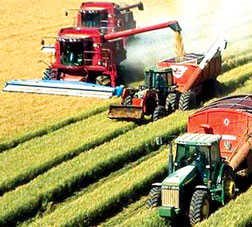 * World food prices skyrocket * World food prices skyrocket
* Food demands increase in China and India
* Barrel of crude oil hits $ 100 mark
* Farmers can take advantage
by Dhaneshi Yatawara
Last December 6th, 'The Economist' magazine stressed the fact that
'Rising incomes in Asia and ethanol subsidies in America have put an end
to a long era of falling food prices.'
 Prices of many staple food items in the international market have
increased to the highest level in history and analysts predict that high
prices will persist for a long period. Prices of many staple food items in the international market have
increased to the highest level in history and analysts predict that high
prices will persist for a long period.
On the other hand, increasing food prices have created serious
challenges as well as numerous opportunities in the agricultural sector.
"The Economist's" food-price index is now at its highest since the
magazine it began publications in 1845, having risen by one-third in the
past year. Adding to the whole scenario the oil price hike, US$ 100 a
barrel, can aggravate the food price increase.
Explaining this crucial phenomenon, Dr. R. M. K. Ratnayake Secretary
of the Trade Ministry said there are three main reasons for this turning
point. One would be the global climate change with prolonged droughts
and global warming, the unmet demand rising from Asia-India and China in
particular and other accelerating factor is the diverting food,
especially grain, into bio fuels.
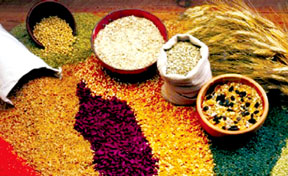 "China has increased the export duty by 26% and India's minimum
export pay has risen to US$ 500 from US$ 200," Dr. Ratnayake added. In
addition the price of wheat is now around US$ 700 per metric ton making
the price of a kilo of seeds to Rs. 80 - when the costs of milling come
in to the process the prices can go up much higher. "China has increased the export duty by 26% and India's minimum
export pay has risen to US$ 500 from US$ 200," Dr. Ratnayake added. In
addition the price of wheat is now around US$ 700 per metric ton making
the price of a kilo of seeds to Rs. 80 - when the costs of milling come
in to the process the prices can go up much higher.
"The Economist" magazine further points out that in early September
the world price of wheat rose to over $ 400 a tonne, the highest ever
recorded. In May it had been around $ 200. According to the report in
real terms its price is far below the heights it scaled in 1974 but is
still twice the average of the past 25 years.
"Earlier this year the price of maize (corn) exceeded $ 175 a tonne,
again a world record. It has fallen from its peak, as has that of wheat,
but at $ 150 a tonne is still 50% above the average for 2006," the
report highlights.
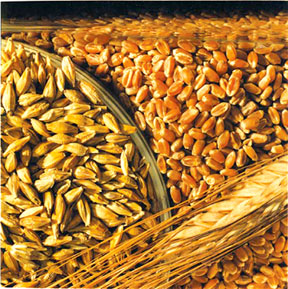 This year harvests were quite low in certain parts of the world,
notably Australia, where the prolonged drought caused the wheat crop to
fail for the second year running in addition to the low production of
world cereals stocks - the lowest ever recorded. This run-down got
steeper by the decision to reduce stocks to save money by large
countries like America and China. This year harvests were quite low in certain parts of the world,
notably Australia, where the prolonged drought caused the wheat crop to
fail for the second year running in addition to the low production of
world cereals stocks - the lowest ever recorded. This run-down got
steeper by the decision to reduce stocks to save money by large
countries like America and China.
According to published news reports from all over the world the
annual meat consumption per person in China has gone up to 50 kilos in
2007 from 20 kilos in 1985.
This factor pushes up the demand for grain as animal fodder - it
takes 8 kilos of grain to produce one kilo of meat. Similarly the demand
for cheese and butter has gone up exerting pressure on dairy product
prices and again on grain prices.
Higher income levels in India and China have made hundreds of
millions of people rich enough to afford meat and other foods, 'The
Economist' states further. Accordingly, in 1985 an average Chinese
person consumed 20 kilos of meat a year and now it has increased to more
than 50 kg. In developing countries as a whole, consumption of cereals
has been flat since 1980, but the demand for meat has doubled, the
report further points out.
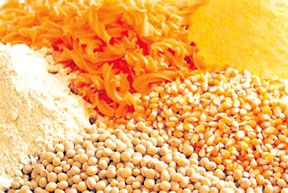 Since the late 1980s an inexorable annual increase of 1-2% in the
demand for feed-grains has ratcheted up the overall demand for cereals
and pushed up prices. Since the late 1980s an inexorable annual increase of 1-2% in the
demand for feed-grains has ratcheted up the overall demand for cereals
and pushed up prices.
The farmers, seeing the changed current demand, have switched on to
poultry and related productions. They now feed about 200 million to 250
million more tonnes of grain to their animals than they did 20 years ago
creating a significant increase in the share of the world's total
cereals crop.
"It takes three kilograms of cereals to produce a kilo of pork, eight
for a kilo of beef," the magazine states. So a shift in diet is
multiplied many times over in the grain markets.
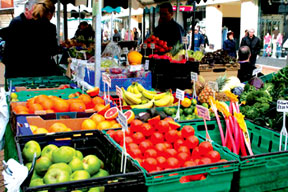 The latest World Development report warns global food supplies are
under pressure from expanding demand for food, feed, and biofuels; the
rising price of energy; and increasing land and water scarcity; as well
as the effects of climate change contributing to uncertainty about
future food prices. The latest World Development report warns global food supplies are
under pressure from expanding demand for food, feed, and biofuels; the
rising price of energy; and increasing land and water scarcity; as well
as the effects of climate change contributing to uncertainty about
future food prices.
The report says in the emerging area of biofuels, the problem is both
restrictive tariffs and heavy subsidies in rich countries, which drive
up food prices and limit export opportunities for efficient developing
country producers.
The report also asserts that industrialized countries that were the
major contributors to global warming urgently need to do more to help
poor farmers adapt their production systems to climate change.
Other factor for the price increase is turning grain into bio fuel
ethanol. In 2000, America used 15 million tonnes of maize to produce
ethanol and in 2007 it increased to 85 million tonnes and worldwide
turning grain to ethanol is increasing. Both these demand factors will
not change immediately and therefore food prices will remain high for a
long time.
 Reports indicate that in 2000 around 15 million tonnes of America's
maize crop was turned into ethanol and this year (2008) the quantity is
likely to be around 85 million tonnes. USA is the world's largest maize
exporter and with this high demand for bio fuel it now uses more of its
maize crop for ethanol than what it send across the seas. Reports indicate that in 2000 around 15 million tonnes of America's
maize crop was turned into ethanol and this year (2008) the quantity is
likely to be around 85 million tonnes. USA is the world's largest maize
exporter and with this high demand for bio fuel it now uses more of its
maize crop for ethanol than what it send across the seas.
The possible makeover
Experts of the field analyzing all there ups and downs states that
the demand factors are strong for the price increase and therefore this
is an ideal opportunity to boost the country's lagging agricultural
sector - may be a blessing in disguise.
This price signal has already influenced farmers in other countries
and now the resources are being directed to increase grain production.
Even the latest World Development Report calls for greater investment
in agriculture in developing countries and warns that the sector must be
placed at the centre of the development agenda if the goals of halving
extreme poverty and hunger by 2015 are to be realized.
Argentina, Morocco, Egypt, Mexico and China have put restraints on
domestic prices. A dozen countries, including India, Vietnam, Serbia and
Ukraine, have imposed export taxes or limited exports. Argentina and
Russia have done both. In all these places governments are seeking to
shelter their people from food-price rises by price controls.
'The Economist' reports that in America, the net farm income this
year will be $ 87 billion, 50% more than the average of the past ten
years.
Analysts believe that since commodity prices have been falling for so
long in the world market, this would be an enormous relief to places
that have suffered from decline of trade.
According to Trade Ministry officials we are 90% self sufficient in
rice production. Accordingly 1.9 million metric tonnes of rise is
produced in the country that is with a two million metric tonne demand
for rice, annually. What if we focus on trying to be self sufficient in
many agri based products within our capacity.
To boost the agro economy, the government should draw up a proper
plan to address fundamental issues that experts have pointed out for a
long time. Issues such as land, marketing, credit and infrastructure
have to be addressed and there are many proposals prepared by
professionals.
Today, the main issue has been solved by the market and farmers will
get higher prices and if we start production of ethanol the market
condition could be sustained for many years, analysts said.
Taking advantage from this move in the world food market can be
tricky. Especially, when the essential commodities for development and
industries rocket. Yet turning this transition point of the world food
market towards our development, development of our farmers will
definitely lift the country economically and socially.
[email protected]
|
